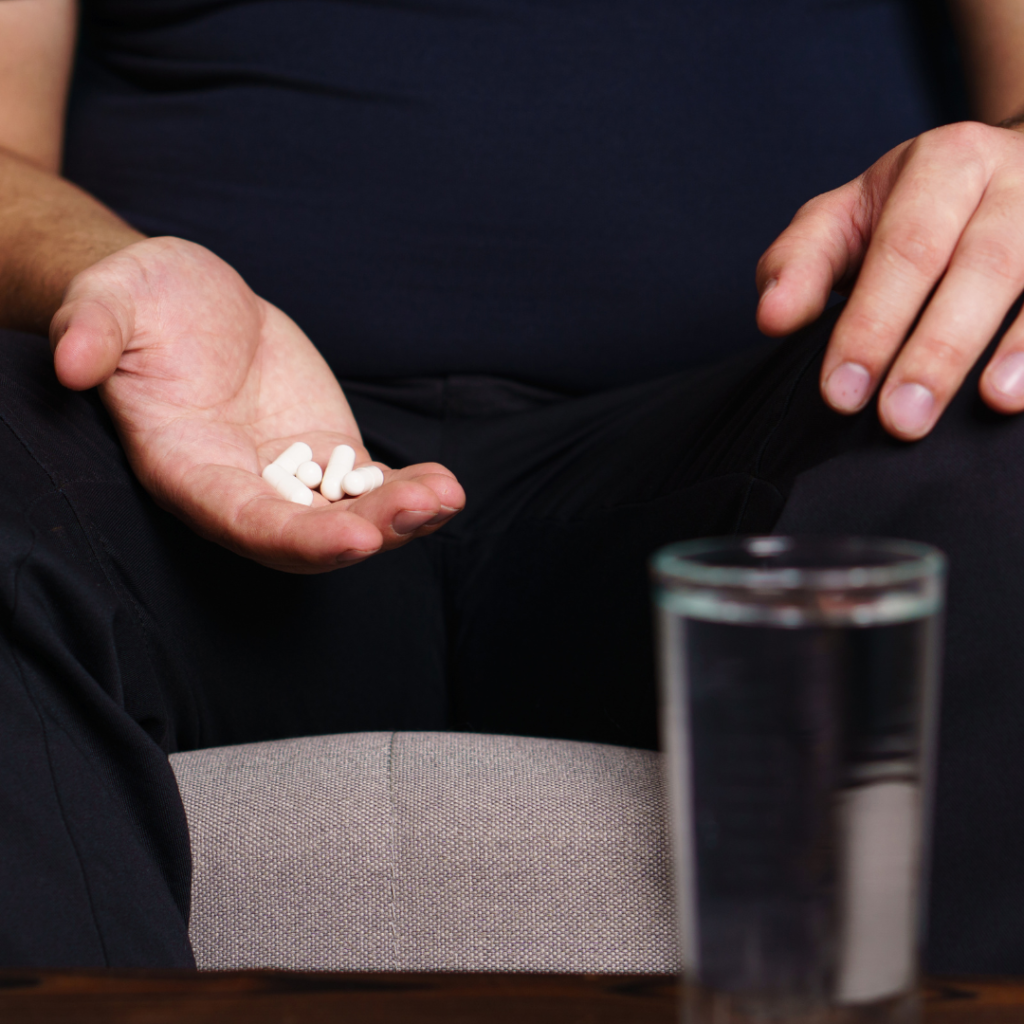When chronic pain becomes an unwelcome companion that accompanies your every step, it can transform how you move through life. Activities once simple and joyful may now seem daunting and agonizing. The barrage of throbbing aches, stabbing pains, and burning discomfort can consume every waking moment; the endless sleepless nights blurring together. Invisible to the outside eye yet excruciatingly real from within, chronic pain has a way of silencing vibrant voices and dimming the light behind once-bright eyes.
And with no concrete cause to vilify or tangible wound to stitch closed, those suffering often bear the added burden of disbelief from friends and family. The dark clouds of isolation and frustration cast shadows on relationships once bathed in sunlight. Sick of acting “strong” yet desperate for understanding, purpose giving way to despair, life constricts at the mercy of unrelenting pain.
But emerging research provides new rays of hope peeking through the clouds. Studies demonstrate gratitude’s ability to reduce the brain’s pain signaling and even increase one’s tolerance threshold. By consciously focusing on blessings rather than burdens, thankful thoughts seem to break the neurological loop that fuels and intensifies physical discomfort. So amidst the storm, there are small sanctuaries to be found through practices of gratitude. When so much has already been taken, gratitude empowers people to choose what they can give. A shift from curling inward to reaching outward. The promise of blossoms is still yet to unfold if nourished by a heart radically committed to seeking thankfulness in all seasons.
The Science Behind Gratitude and Pain
When discussing gratitude scientifically, it refers to a sense of thankfulness and appreciation for life’s gifts – big or small. The concept is studied as both a temporary state of being grateful, such as in reaction to receiving a kind gesture, as well as an ongoing personality trait where someone maintains a grateful perspective on life.
Research insights connecting gratitude and the experience of pain first surfaced in studies focused on pain tolerance and pain threshold. These two indicators measure how much pain someone can withstand before needing relief (tolerance) and the point where they begin feeling pain at all (threshold). Multiple experiments demonstrate that participants induced into a grateful state of mind displays higher tolerance and threshold for pain compared to neutral or negative emotional states.
One study asked participants to undergo tolerance tests for extreme cold. Those who mentally counted their blessings withstood significantly more time before withdrawing their immersed hand. Thus, cultivating feelings and thoughts centered on gratitude seems to elevate people’s baseline resilience to painful stimuli.
Scientists believe gratitude can mediate pain processing through both psychological and neurological mechanisms. Psychologically, focusing on blessings rather than burdens helps improve mood, reduces anxiety and emotional distress to stressors, and shifts mindset – all shown to modulate pain. Additionally, brain imaging reveals that feelings of gratitude activate reward-related areas like the prefrontal cortex while dampening activity in the anterior cingulate cortex and amygdala – two regions involved in processing pain signals. This suggests an upregulation of the neural pathways for pleasure and contentment, reducing the suffering signals.
On the whole, studies substantiate that living from a grateful state of being can counteract the heavy weight of chronic pain by boosting tolerance thresholds, reframing mindsets around the pain, and actually altering neurological firing patterns.
Practicing Gratitude for Pain Relief
One accessible starting point is keeping a gratitude journal. Whether digital, written, or dictated, dedicating 5-10 minutes daily to log blessings, reflect on positive moments, or consider what you’re grateful for sows seeds of mindset change. Prompts like, “Today, I’m grateful for…” or “3 good things that happened…” facilitate introspection.
Writing letters of gratitude to loved ones who support you through painful days offers another outlet. Details matter here; not just a generic thank you, but specific expressions of what their compassion has meant during distress. Deep reflection bears tangible fruit as an encouragement to another.
As pain ebbs and flows, intentionally reframing stressful thoughts is invaluable. Stopping to ask, “Is focusing on this anxiety or frustration serving me?” before redirecting towards patience, courage, acceptance, or hope diffuses unhelpful mind loops. This builds resilience over time.
On especially challenging days, calming mindfulness meditation concentrated on gratitude might provide respite. Imagining pain floating away with each long exhale while inhaling blessings like laughter, encouragement or strength works wonders to restore depleted reserves.
The common thread binding these modalities is their power to help us rise above painful circumstances and shift perspective – even briefly – to consider the gifts surrounding us. Tiny acts of beauty, kindness, mercy, resilience, and love wait patiently to be uncovered, even on the darkest stormiest nights. Intentionally taking note breathes new life into our weary, pain-riddled spaces. Eyes open wide again to astonishing glory all around.
Additional Lifestyle Changes That Complement Gratitude
Beyond the more solitary reflections and exercises cultivating thankfulness, making a few key lifestyle adjustments can reinforce gratitude’s pain alleviating potential. By aligning environments and activities with this goal of boosted blessings awareness, you essentially stack the deck – surrounding yourself with constant reminders of what matters.
Given its shown benefits for mental and physical health, one significant lifestyle shift lies in nurturing social connections. This both fills your relational “reserves” and motivates you to express gratitude to special people around you. Writing a heartfelt email to a long-distance friend or scheduling a movie night with family inoculates against isolation while strengthening bonds that support you in trying times.
Likewise, taking note as uplifting moments unfold keeps you attuned to bright spots like an encouraging text, playful squirrels outside, or a prayer answered at just the right time. Whether jotting them quickly in a pocket notebook or whispering thanks aloud reinforces that these flashes matter during storms that obscure the sun.
If spirituality provides comfort amidst chronic troubles, leaning into grateful prayers or meditations here too makes sense. Thanking God for provision, healing, and community; envisioning pain transforming to wholeness; remembering you are never alone – these affirmations reassure and realign perspective around hope.
Opportunities to volunteer with people facing comparable challenges – or even greater – offer inspiration through service. Helping prepare meals, listening compassionately, providing rides, or sending cards are but a few ideas if mobility is limited. Acts of genuine help foster community while keeping personal pains in perspective.
Ultimately, nurturing self-compassion and caring for your whole being – body, mind and spirit – lays the groundwork. As biological research confirms, supporting foundational functions like nourishment and rest ensures maximal thriving and resilience capacity from within. This grants needed strength for facing each waxing and waning season grateful to rise with the sun once more.
In conclusion
As we’ve explored, an expanding body of research confirms gratitude’s ability to reduce the burden of chronic pain through a variety of mechanisms. From shifting pain thresholds and tolerance to mediating brain activity in areas involved with processing suffering, thankfulness seems to unlock transformative healing potential.
The ways gratitude alleviates pain holistically – addressing both tangible physical and intangible emotional realms – generates hope for those whose trials persist despite conventional treatment. Far from a passive therapy, embracing gratitude equips patients to take back agency over their health through practices that overlay thoughts focused on blessings rather than burdens.
We summarized key modalities like establishing a gratitude journal routine, penning inspirational letters, reframing pessimistic ruminations, engaging in meditative thankfulness, and discovering reasons for gratitude amidst the struggle. Additionally, lifestyle factors like nurturing social connections, focusing on uplifting moments every day, incorporating prayerful thanksgiving, volunteering to help fellow sufferers, and prioritizing self-care complement gratitude work.
In closing, I hope these insights on gratitude provide encouragement to persevere through seasons of chronic pain. Even while pursuing other means of relief, purposefully reflecting on moments of joy and reasons for thankfulness may slowly transform perspective. The light still shines even on our darkest days if we lift tear-filled eyes to see the gifts scattered at our feet. When so much has been lost or threatens loss, we yet retain the power to choose where we shift our gaze each morning – training it with the radical intention of life’s blessings waiting to be claimed in abundance all around.






